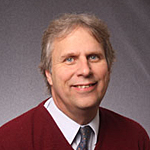Chemistry Masters Program is 55 Years Old!
At 55 years old, the Chemistry Master’s Program flourishes.
 Most people think of W&M as a first-rate public university offering undergraduates the best in liberal arts education. While this is 100% true, what makes The College a true university are our graduate programs. In addition to its undergraduate degree offerings, W&M also provides top-notch graduate and professional programs in business, education, law, and in many arts & sciences disciplines, including chemistry. Over the years the W&M Chemistry Department has turned out over 150 Master’s alumni. Perhaps you’re even one of them! But in case you’re not up to speed on our Chemistry Master’s, read on and see what the program is all about.
Most people think of W&M as a first-rate public university offering undergraduates the best in liberal arts education. While this is 100% true, what makes The College a true university are our graduate programs. In addition to its undergraduate degree offerings, W&M also provides top-notch graduate and professional programs in business, education, law, and in many arts & sciences disciplines, including chemistry. Over the years the W&M Chemistry Department has turned out over 150 Master’s alumni. Perhaps you’re even one of them! But in case you’re not up to speed on our Chemistry Master’s, read on and see what the program is all about.
As of fall 2020, the Chemistry Department has maintained an active Master’s program for 55 years! It all began back in 1965 when the first two Chemistry Master’s students were enrolled as part of an expansion of the College’s graduate offerings. The addition of a Master’s degree to Chemistry’s offerings was, at least in part, a response to increasing research collaboration and funding opportunities associated with the NASA facility in Newport News. This installation, which boasted a proton cyclotron, was located on land that is now part of the Jefferson Lab.
W&M’s expansion in graduate science education was also connected in part to new joint scientific research ventures with Virginia Tech, and the University of Virginia. The early years of the Chemistry Master’s program, 1965-1970, coincided with a period of growth in the Chemistry Department that saw the addition of new faculty members Dick Kiefer, David Thompson, Randy Coleman, Bob Orwoll, Mel Schiavelli, and David Kranbuehl.
Many of our Master’s alumni have kept in close touch with the department and have generously given back to the program. For example, Jean Takeuchi (W&M M.A. ’76) spearheaded the establishment of a graduate fellowship for Chemistry (named for Emeritus Profs. Kranbuehl and Thompson). This fellowship is awarded yearly to high-achieving students in the Chemistry Master’s program. David Hood (W&M M.S. ‘92, W&M Ph.D. in Applied Science ‘96) serves on the W&M Arts & Sciences Graduate Board. The Board’s mission is to assist the A&S graduate programs through development and fundraising and to help to build community, offer professional development opportunities, and advocate for the programs.
The Chemistry Master’s program has grown over the years, and now consists of 8-12 students. In the last decade alone Chemistry awarded over 60 Master’s degrees. Most of our students complete a thesis-based M.S. degree. Some of the graduates transition directly into careers in chemistry, while others pursue further advanced degrees. Our graduates have followed career paths in chemistry, medicine, and related fields in academics, industry, and government.
Our M.S. degree program is particularly attractive and competitive in attracting applicants since, for full-time students, it is fully funded, with tuition coverage and a stipend provided. W&M Chemistry Master’s students typically spend between a year and a half and two years in the program. This time is spent largely in three capacities: carrying out thesis research under the supervision of a faculty advisor, taking graduate-level courses in chemistry and related fields, and serving as teaching assistants. The majority of a student’s classes, as well as their comprehensive exam in chemistry, takes place during their first year. This enables the student to focus more intensely on their research efforts during the second year. The culmination of the M.S. experience is the preparation of a research-based thesis and its defense before a faculty committee.
The Chemistry Department website provides more details about the program and our current students and recent graduates. For those of you who are alumni of the program, we welcome your personal messages to us on social media (W&M Chemistry Alumni on Facebook), by [[chemis, email]], or through the mail (Chemistry Dept., W&M, P.O. Box 8795, Williamsburg, VA 23187-8795). If you are a Chemistry Master’s alumnus/alumna, we would love to hear from you!
2020-2021 W&M Chemistry Master’s students
Megan Alfieri (B.S. Ashland Univ. ’20, advisor: Prof. Nathan Kidwell, research topic: Molecular-level understanding of aerosol chromophore photophysics and photochemistry)
Caleb Burns (B.S. W&M ’19, advisor: Prof. Rob Hinkle, research topic: Organic synthesis of heterocyclic aromatic compounds and characterization of their fluorescent properties)
Kayla Copeman (B.S. Univ. Lynchburg ’19, advisor: Prof. Tyler Meldrum, research topic: Using single-sided NMR, FTIR, and DSC to study interfaces formed by epoxy systems)
Lauren Green (B.S. Mary Baldwin Univ. ’13, advisor: Prof. Doug Young, research topic: Development and screening of bioactive organic antibiotic compounds)
Kelly Kopera (B.S. W&M ’20, advisor: Prof. Kristin Wustholz, research topic: Single-molecule spectroscopy of photosensitizers for applications in solar energy conversion)
Emily Legaard (B.S. Villanova Univ. ’19, advisor: Prof. Rachel O’Brien, research topic: Analyzing organic compounds found in films on indoor and outdoor surfaces)
Caroline Margonis (B.S. Univ. North Carolina Chapel Hill ’18, advisor: Prof. William McNamara, research topic: Ligand modification and synthesis for use in photocatalytic hydrogen generation)
Hao Qian (B.S. Univ. Liverpool ’18, advisor: Prof. J.C. Poutsma, research topic: Bottom-up method for proteome identification based on mass spectrometry and HPLC)
Claire Robinson (B.S. Christopher Newport Univ. ’16, advisor: Prof. Rachel O’Brien, research topic: Online and offline aerosol mass spectrometry)
Matthew Sturner (B.S. W&M ’18, advisor: Prof. Debbie Bebout, research topic: Inorganic molecules in biological systems)














